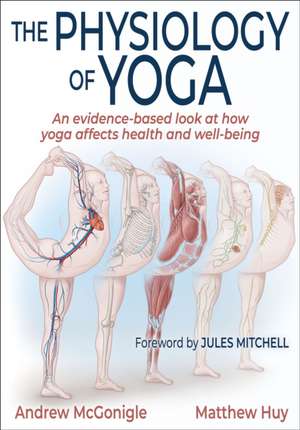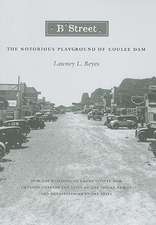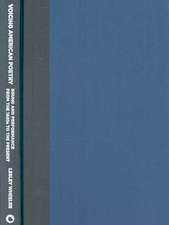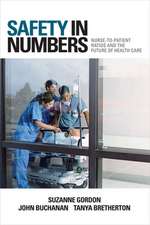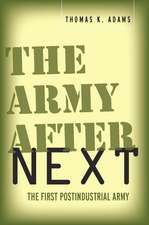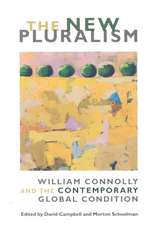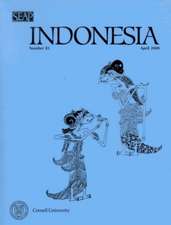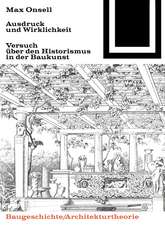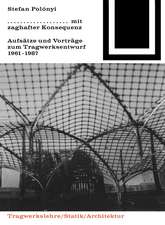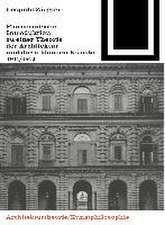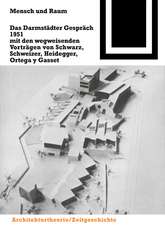The Physiology of Yoga
Autor Andrew Mcgonigle, Matthew Huyen Limba Engleză Paperback – 12 iun 2022
Preț: 170.94 lei
Nou
Puncte Express: 256
Preț estimativ în valută:
32.71€ • 34.03$ • 27.01£
32.71€ • 34.03$ • 27.01£
Carte disponibilă
Livrare economică 24 martie-07 aprilie
Preluare comenzi: 021 569.72.76
Specificații
ISBN-13: 9781492599838
ISBN-10: 1492599832
Pagini: 264
Dimensiuni: 178 x 254 x 14 mm
Greutate: 0.64 kg
Editura: MG – Human Kinetics
ISBN-10: 1492599832
Pagini: 264
Dimensiuni: 178 x 254 x 14 mm
Greutate: 0.64 kg
Editura: MG – Human Kinetics
Notă biografică
Andrew McGonigle has been practicing yoga and meditation for over 15 years and teaching yoga since 2009. He teaches anatomy and physiology in many yoga teacher training courses and leads his own international workshops. Although McGonigle studied anatomy in great detail during medical school, he learned to look at it from a different angle and create ways to make it relevant to yoga. He enrolled in hands-on dissection classes focused on fascia and spent his spare time rereading anatomy books, listening to podcasts, and talking about anatomy with anyone who would listen. McGonigle previously contributed a monthly article to Om Yoga & Lifestyle magazine ("360° Yoga With Doctor Yogi") and wrote two chapters for Yoga Teaching Handbook: A Practical Guide for Yoga Teachers and Trainees. He is also the author of Supporting Yoga Students With Common Injuries and Conditions. McGonigle resides in Los Angeles. Matthew Huy (pronounced "hooey") has been teaching yoga since 2005. He teaches anatomy and physiology in many teacher training courses in addition to providing mentoring and professional development workshops to yoga teachers. While studying biology in college, Huy discovered the joy of movement when he enrolled in a dance class and then a yoga class. A few years later, he changed tack and went on to complete a bachelor of arts degree in dance from California State University at Long Beach and completed teacher training courses in yoga, Pilates mat work, TRX, and Thai yoga massage. In 2021, he completed a master of science degree in sport, health, and exercise science at Brunel University at London, where he focused on exercise physiology and pain science. His master's research centered on the impact of yoga teachers' language on their students. Huy resides near London in the United Kingdom.
Cuprins
Chapter 1. Musculoskeletal System
Bone
Joints
Muscles
Cartilage
Tendons, Ligaments, and Aponeuroses
Fascia
The Science of Stretching and Flexibility
Pathologies, Injuries, and Conditions
Conclusion
Chapter 2. Nervous System
Cells of the Nervous System
Central Nervous System
Peripheral Nervous System
Nervous System Conditions
Conclusion
Chapter 3. Respiratory System
Anatomy and Physiology of the Respiratory System
The Biomechanics of Quiet Breathing
All About the Diaphragm
Forced Exhalation and Inhalation
Atmospheric Air and Expelled Air
Good, Wholesome Oxygen?
Ujjayi Breathing
Nose Breathing and Mouth Breathing
The Psychological and Physiological Effects of Pranayama and Slow Breathing
Pathologies and Conditions of the Respiratory System
Conclusion
Chapter 4. Cardiovascular System
Blood
Heart
Circulation
Role of the Cardiovascular System in Maintaining Homeostasis
Resting Heart Rate and Cardiac Output
Heart Rate Variability
Blood Pressure
Cardiovascular Conditions
Conclusion
Chapter 5. Lymphatic and Immune Systems
Lymphatic System
Immune System
Conclusion
Chapter 6. Endocrine System
What Is a Hormone?
Cortisol: The Master Hormone
Insulin
Thyroid Hormones
Endorphins: Our Body’s Morphine
Dopamine
Pathologies
Conclusion
Chapter 7. Reproductive System
Female Reproductive System Anatomy
Female Reproductive System Physiology
Male Reproductive System
Reproductive System Conditions
Conclusion
Chapter 8. Digestive System
Anatomy and Physiology of the Digestive System
Diet and the Digestive System
Pathologies and Gastrointestinal Problems
Conclusion
Chapter 9. Practice With Confidence
Strong, Dynamic Practice
Slow Hatha Practice
Chair Yoga Practice
Restorative Yoga Practice
Conclusion
Bone
Joints
Muscles
Cartilage
Tendons, Ligaments, and Aponeuroses
Fascia
The Science of Stretching and Flexibility
Pathologies, Injuries, and Conditions
Conclusion
Chapter 2. Nervous System
Cells of the Nervous System
Central Nervous System
Peripheral Nervous System
Nervous System Conditions
Conclusion
Chapter 3. Respiratory System
Anatomy and Physiology of the Respiratory System
The Biomechanics of Quiet Breathing
All About the Diaphragm
Forced Exhalation and Inhalation
Atmospheric Air and Expelled Air
Good, Wholesome Oxygen?
Ujjayi Breathing
Nose Breathing and Mouth Breathing
The Psychological and Physiological Effects of Pranayama and Slow Breathing
Pathologies and Conditions of the Respiratory System
Conclusion
Chapter 4. Cardiovascular System
Blood
Heart
Circulation
Role of the Cardiovascular System in Maintaining Homeostasis
Resting Heart Rate and Cardiac Output
Heart Rate Variability
Blood Pressure
Cardiovascular Conditions
Conclusion
Chapter 5. Lymphatic and Immune Systems
Lymphatic System
Immune System
Conclusion
Chapter 6. Endocrine System
What Is a Hormone?
Cortisol: The Master Hormone
Insulin
Thyroid Hormones
Endorphins: Our Body’s Morphine
Dopamine
Pathologies
Conclusion
Chapter 7. Reproductive System
Female Reproductive System Anatomy
Female Reproductive System Physiology
Male Reproductive System
Reproductive System Conditions
Conclusion
Chapter 8. Digestive System
Anatomy and Physiology of the Digestive System
Diet and the Digestive System
Pathologies and Gastrointestinal Problems
Conclusion
Chapter 9. Practice With Confidence
Strong, Dynamic Practice
Slow Hatha Practice
Chair Yoga Practice
Restorative Yoga Practice
Conclusion
